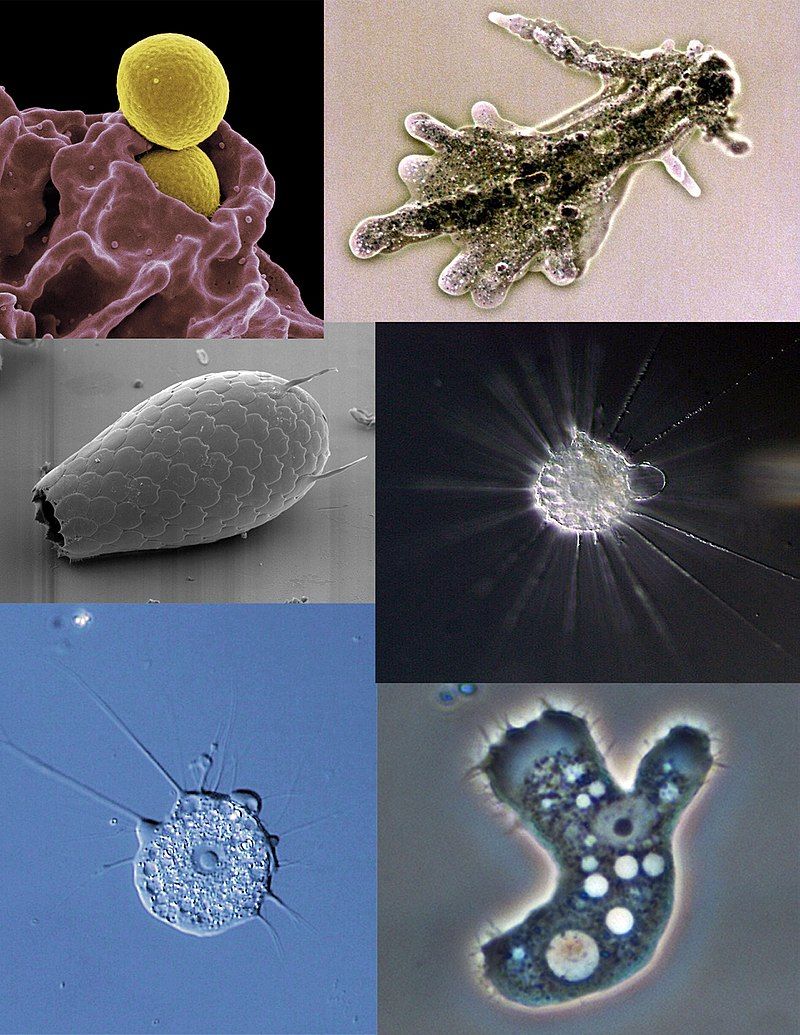
Farming as unussual
I don’t know about you, but when I was at school in biology class we were hunting through the microscope after paramecium and amoebas. Amoebas reminded me of Barbapapa[1] - famous french animation series. Little did I know then that amoebas are very clever organisms. Even teachers did not know that at that time. I wonder if teachers of today know. There is much to be learned from amoeba.[2] This family (genus to be more exact) of species is very versatile. Several different unicellular organisms of this family has developed some really neat tricks. Being basically a blob some of them invented pseudo limbs to move around. The other have shells, just in case, some are poking holes into other cells and slurping out innards of a cell. (See bellow) Some other like Dictyostelium discoideum or Dicty for short love to eat bacteria. In fact they like the bacteria so much they are farming[3] them.
_______________________________________________
Here on the left are representatives of different types od amoebas. Copied from Wikkipedia.
By Respectively: NIAID, Cymothoa exigua, Jacob Lorenzo-Morales, Naveed A. Khan and Julia Walochnik, This file was derived from:Methicillin-Resistant Staphylococcus aureus (MRSA) (11857240186).jpgAmoeba proteus.jpgActinophrys sol.jpgParasite140120-fig3 Acanthamoeba keratitis Figure 3A.pngNuclearia sp Nikko.jpgEuglypha sp.jpg, CC BY-SA 4.0, https://commons.wikimedia.org/w/index.php?curid=67064281
_______________________________________________
Amoeba with protrusions. From wikipedia.
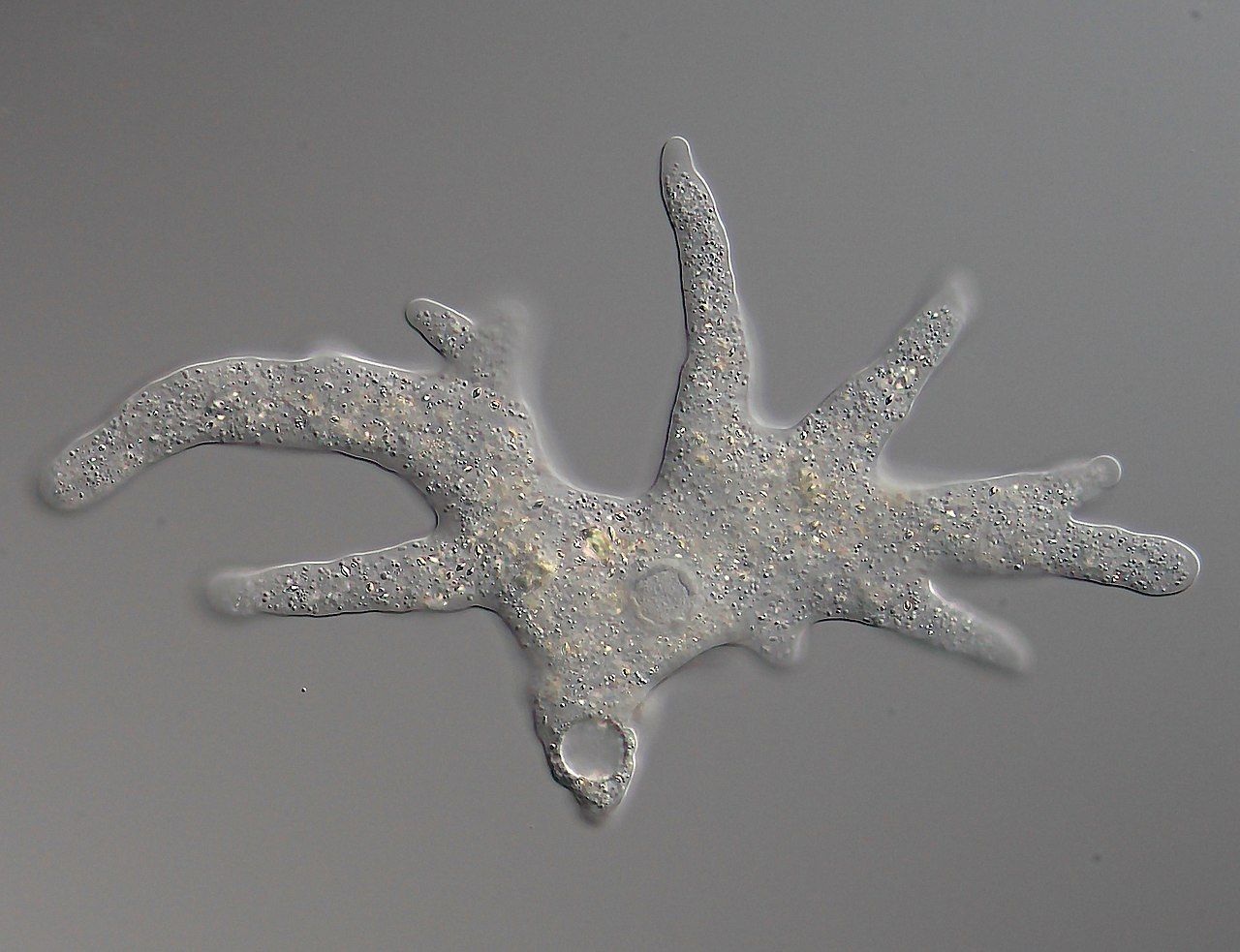
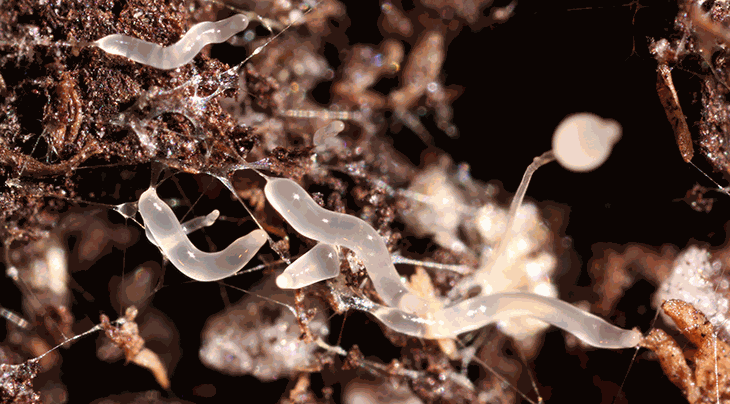
When in trouble, clump together
Besides being a farmer Dicty has another trick up in the sleeve. It looks like that Dicty has a split personality. If there is enough food they are loners. They go around on their own. But as soon as the food is scarce they pull together and clump into a blob that is, surprisingly, able to move.[5] Much like Barbapapa.
Two mysteries here, guys and gals as well; to be politically correct. First mystery is how they manage to decide to clump together at all. And we got answer for a first one. Well, Thomas Gregor[6] and his team does. They do it with the help of the chemical called cyclic adenosine monophosphate (cAMP).
Hungry amoeba responds to the concentration of cAMP in its surroundings.
_______________________________________________
Tens of thousands of Dicty amoebas joined together crawling their way through the soil. Photo credit: Tyler J. Larsen/Wikimedia Commons (CC BY-SA 4.0)
Democracy down under
Quorum sensing at its best. They simply clamp together once the concentration of cAMP is high enough. These clumps are so massive that they can be seen with naked eye. Amoeba becomes multicellular entity.When the amount of the chemical surrounding an individual cell reaches a certain critical level, the scientists found, the cell starts to pulse rhythmically, firing off more chemicals into the surrounding area that prompt other cells to pulse, an effect that cascades through the population. Ultimately, the cells grow in sync with each other and eventually move together as a massive group.
_______________________________________________
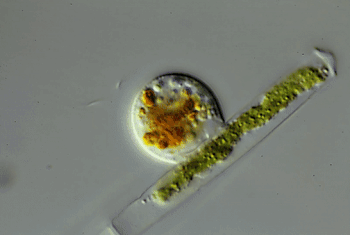
Is it through copying? Cell at the edge bumps into obstacle and tries to avoid it in a certain direction. Others simply copy the movement, or? Single amoeba moves[7] using pseudopods[8] and blebs[9]. Being in a clump, that is a bit difficult to do. How do they manage then? Scientists have some basic ideas how it might be possible. Again I am not going into details for this is whole field of research covering something called “collective behavior”[10] covering everything from movement of cells, flock of birds, shoals of fish, herds of animals, movement of people in large groups… For more details check the quoted papers.[11] These researchers can give us also some tangible results like algorithms for robots.[12] Studying Dicty is essential to understand some - way more complex - cell behaviours like how the wound healing progresses. For here also cells have to move to cover the wound. Or a “bit” more complicated issue of how do the cells know where to go when growing the organ, for example. How they know on which side of heart they have to be when the heart is developing in the embryo?
The problem in all these examples is that there are just too many things going on in this environments to study such things. Embryonic environment is just too noisy. Too much signalling among too many different cells behind too many tissues inside the womb. Which is anyway inside yet another organism also busy signalling.
Dicty is way simpler. Just one type of cell, that manages to move when clumped together. Period. You can observe it with naked eye. It is quite obvious that Dicty has to have some kind of messaging system in place to coordinate any kind of movement of individual cells. Already in 2000 there was a computer model developed that quite faithfully replicated the 2D version of collective motion.[13] They predicted the cell to cell interaction and signalling. It took another 19 years to get some tangible results from the real world. There are two recent papers that have shed some light into this movement. While gathering of amoeba into the clump is governed by quorum sensing of cAMP chemical, once in the clump also other chemicals[14] jump into and especially important is cell to cell touching that at certain stages, as it seems,[15] completely overrides the cAMP signalling. This is current understanding of what is going on.
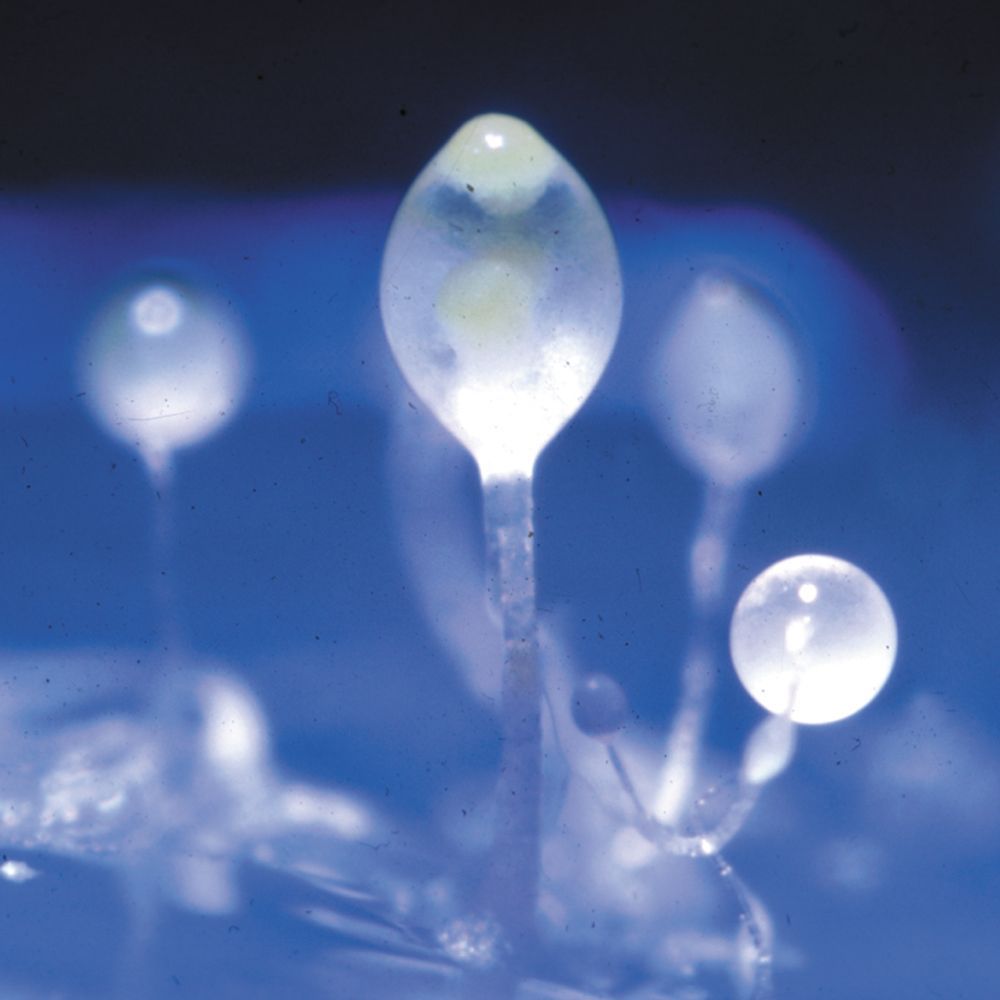
...you ain’t seen nothin’ yet
Dicty is full of surprises. They can under certain conditions create a protective interface to protect themselves from pathogens. They use lectin to bind and create protective interface with, you will never guess - with the help of some associated bacteria. And not only this.To protect the clump against toxins and pathogens Dicty has invented also some kind of special variation (altruistic?) cells as well. Called sentinel cells they represent 1% of the total number in the clump. They take care of toxins and pathogens, eating them up. They sequester them in vesicles within the cell. Once full they are left behind. Being replaced by the new altruistically inclined amoebas. Did amoebas invent also precursor of multicellular immune system?
There is yet another “miracle” that amoeba can perform. They can navigate the maze.[16] Nakagaki et.al. put amoeba clump into a maze covered with plain agar gel and placed food in two separate positions. There were four possible routes that amoeba could get to the food. And:
“…this simple organism has the ability to find the minimum-length solution between two points in a labyrinth.”
Not only they can crawl around, they can do it in a rather sophisticated way. What “they” did, they had spread to cover the whole area of the maze, and then retracted protrusions that ended up in the dead end to get onto the shortest routes. ProtoIntelligence?
To conclude the amoeba section.
As you have probably noticed by now I am all over the text talking about importance of observing things from a bit different perspective, looking for networking and contexts. Here is what Thomas Gregor says:
"It is increasingly clear that cells within organisms behave collectively. It is therefore no longer enough to understand how single cells behave. Instead, we must identify their collective interactions and their signaling mechanisms at a systems level."
While there is a lot of research going into understanding the signalling chemicals. What about other ways of “communication”? There is another “context” in the field of cell communication and signalling. Bioelectric currents and fields? After all, scientist can induce the growth of an organ in an totally unusual place by changing the voltage of cell membranes. In a paper[17] “Transmembrane Voltage Potential Controls Embryonic Eye Patterning in Xenopus Laevis,” Vaibhav P. Pai et.al., reports that they have managed to convince cells in the tadpole tail to evolve into - eyes.
It seems that there is much more going on in the realm of cells than just chemistry.
And if by any chance I am to be reincarnated as unicellular organism. I prefer to be amoeba. Seems way cool.
[1] Barbapapa - Dessin Animé - Episode 1 “La Naissance de Barbapapa,” 2015. https://www.youtube.com/watch?v=TsOiit3Mu3k&app=desktop.
[2] “Amoeba - an Overview | ScienceDirect Topics.” Accessed August 15, 2019. https://www.sciencedirect.com/topics/earth-and-planetary-sciences/amoeba.
[3] Brock Debra A., Callison W. Éamon, Strassmann Joan E., and Queller David C. “Sentinel Cells, Symbiotic Bacteria and Toxin Resistance in the Social Amoeba Dictyostelium Discoideum.” Proceedings of the Royal Society B: Biological Sciences 283, no. 1829 (April 27, 2016): 20152727. https://doi.org/10.1098/rspb.2015.2727.
[4] “Aphid | Insect.” Encyclopedia Britannica. Accessed September 7, 2019. https://www.britannica.com/animal/aphid.
[5] Kessin RH. 2001Dictyostelium—evolution, cell biology, and the development of multicellularity. Cambridge, UK: Cambridge University Press. via ibid
[6] “Princeton University - Scientists Discover the Molecular Heart of Collective Behavior.” Accessed February 22, 2017. https://www.princeton.edu/main/news/archive/S27/42/78C85/index.xml?section=featured.
[7] Zatulovskiy, Evgeny, Richard Tyson, Till Bretschneider, and Robert R. Kay. “Bleb-Driven Chemotaxis of Dictyostelium Cells.” The Journal of Cell Biology 204, no. 6 (March 17, 2014): 1027–44. https://doi.org/10/f5vxfr.
[8] a temporary protrusion of the surface of an amoeboid cell for movement and feeding.
[9] a rounded outgrowth on the surface of a cell
[10] Vicsek, Tamás, and Anna Zafeiris. “Collective Motion.” Physics Reports 517, no. 3–4 (August 2012): 71–140. https://doi.org/10/gf3bhn.
[11] Méhes, Előd, and Tamás Vicsek. “Collective Motion of Cells: From Experiments to Models.” Integr. Biol. 6, no. 9 (2014): 831–54. https://doi.org/10/gf3zst.
[12] Virágh, Csaba, Gábor Vásárhelyi, Norbert Tarcai, Tamás Szörényi, Gergő Somorjai, Tamás Nepusz, and Tamás Vicsek. “Flocking Algorithm for Autonomous Flying Robots.” Bioinspiration & Biomimetics 9, no. 2 (May 22, 2014): 025012. https://doi.org/10/gf7pjr.
[13] Palsson, Eirikur, and Hans G. Othmer. “A Model for Individual and Collective Cell Movement in Dictyostelium Discoideum.” Proceedings of the National Academy of Sciences of the United States of America 97, no. 19 (September 12, 2000): 10448–53. https://www.ncbi.nlm.nih.gov/pmc/articles/PMC27044/.
[14] Fujimori, Taihei, Akihiko Nakajima, Nao Shimada, and Satoshi Sawai. “Tissue Self-Organization Based on Collective Cell Migration by Contact Activation of Locomotion and Chemotaxis.” Proceedings of the National Academy of Sciences 116, no. 10 (March 5, 2019): 4291–96. https://doi.org/10/gf7pj6.
[15] Hashimura, Hidenori, Yusuke V. Morimoto, Masato Yasui, and Masahiro Ueda. “Collective Cell Migration of Dictyostelium without CAMP Oscillations at Multicellular Stages.” Communications Biology 2, no. 1 (January 24, 2019): 1–15. https://doi.org/10/gf7pj2.
[16] Nakagaki, Toshiyuki, Hiroyasu Yamada, and Ágota Tóth. “Maze-Solving by an Amoeboid Organism.” Nature 407, no. 6803 (September 2000): 470–470. https://doi.org/10/dw62bd.
[17] Pai, Vaibhav P, Sherry Aw, Tal Shomrat, Joan M Lemire, and Michael Levin. “Transmembrane Voltage Potential Controls Embryonic Eye Patterning in Xenopus Laevis,” n.d., 12.Start writing here...
Amoeba the Miraculous
or how this single cell organism cooperates